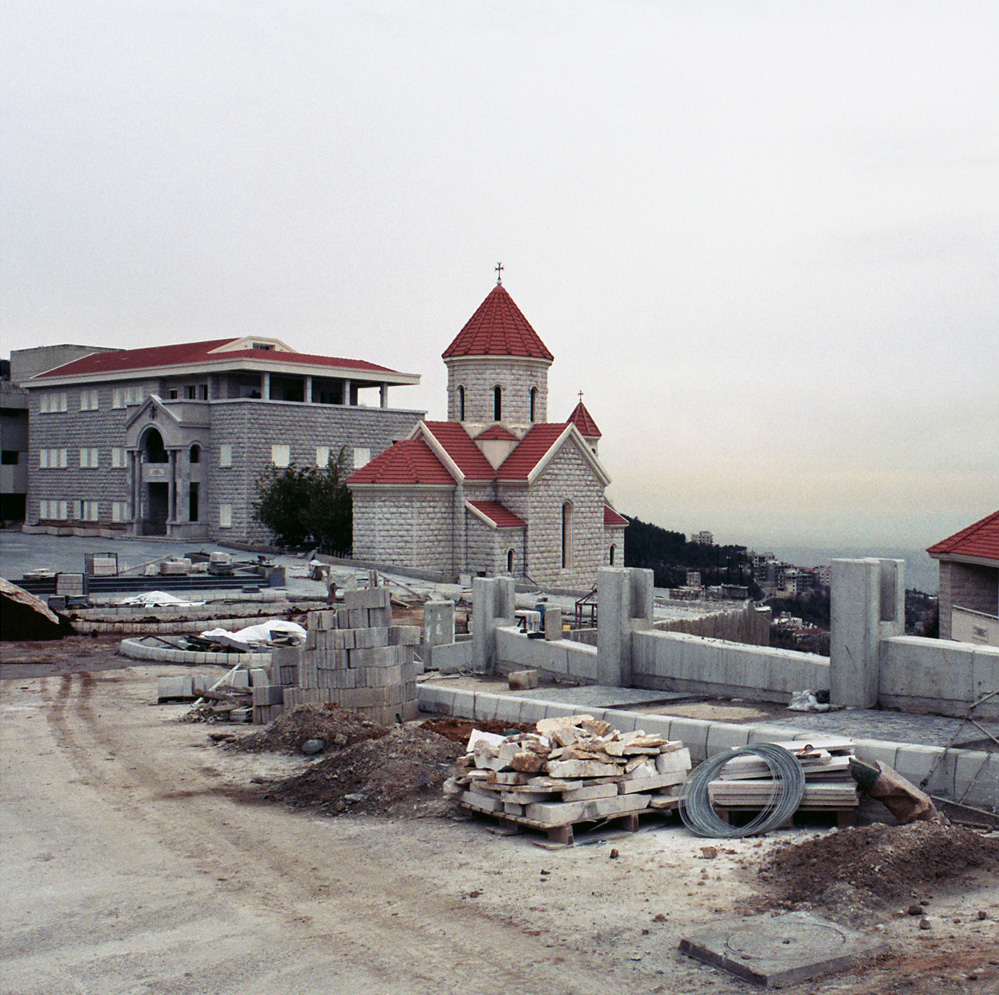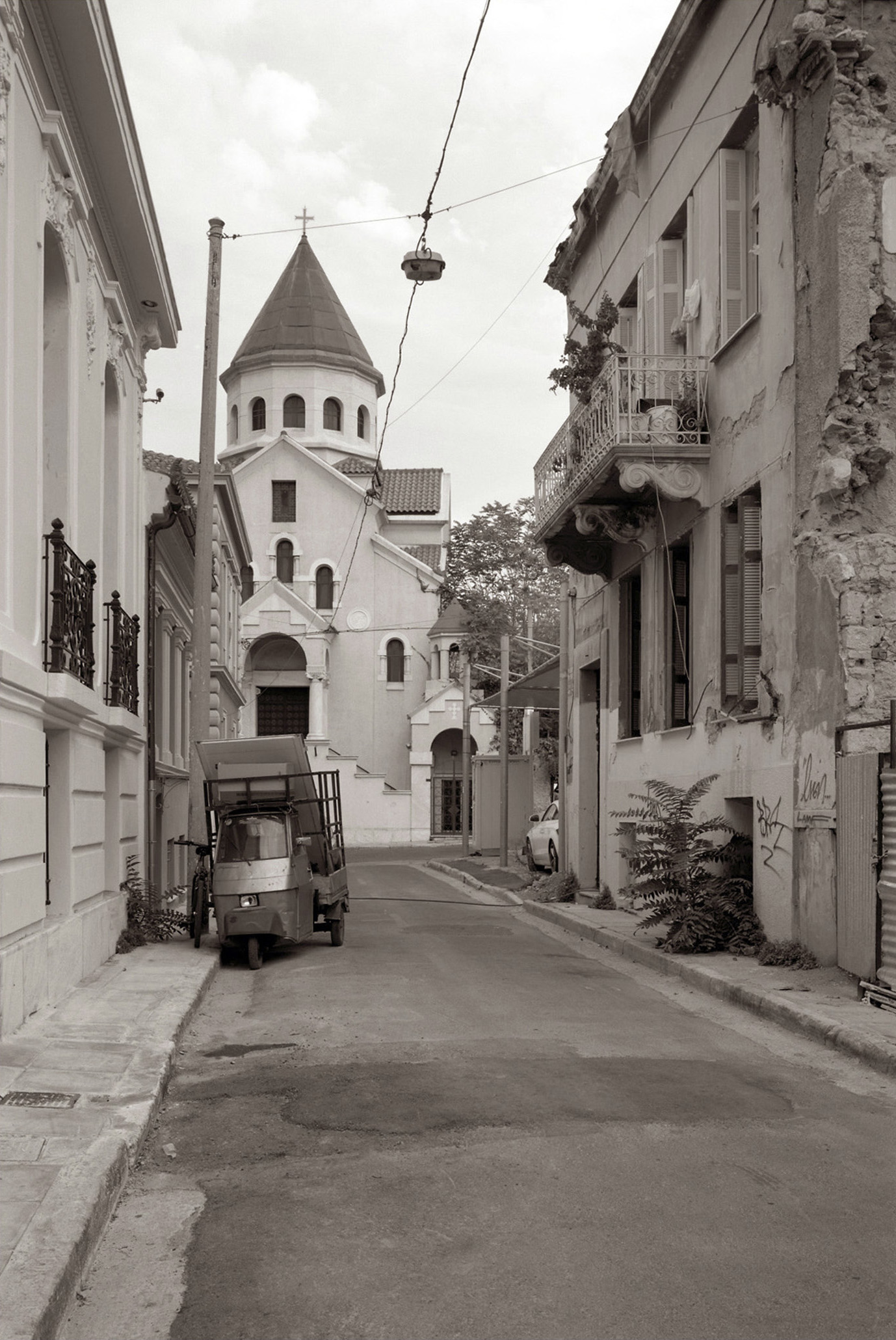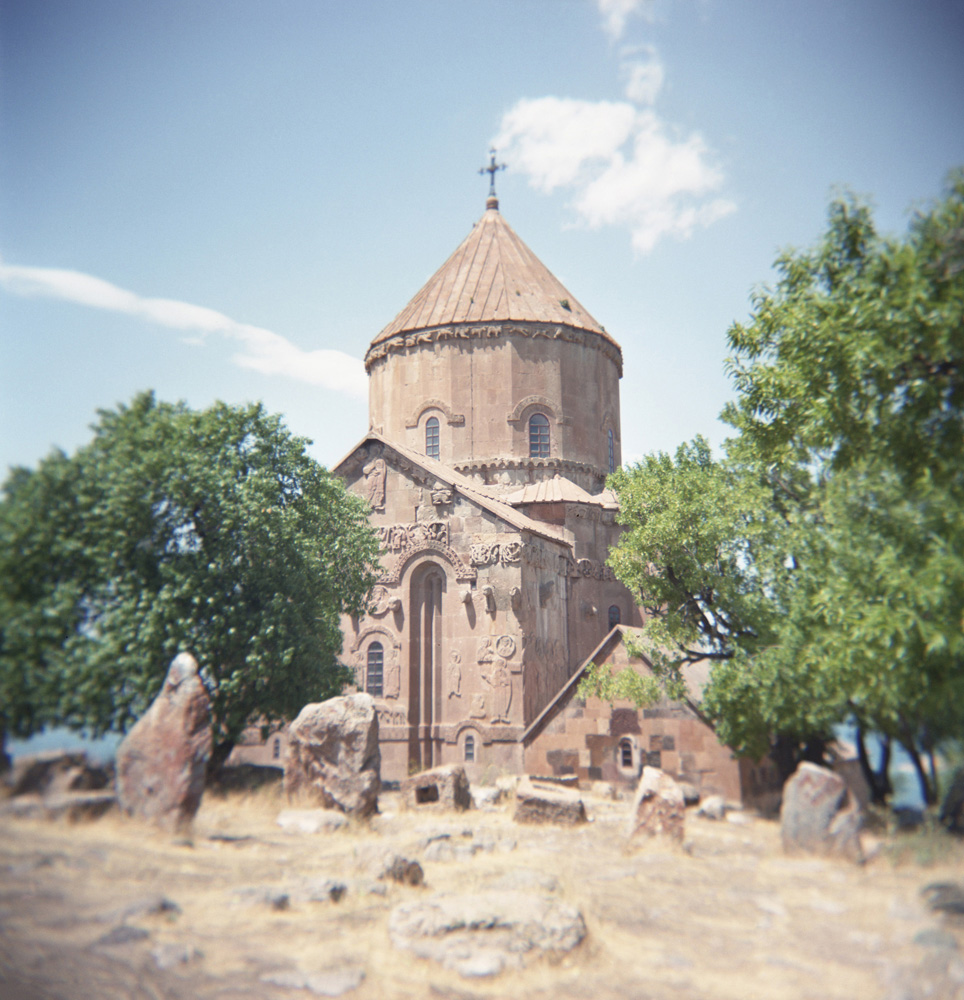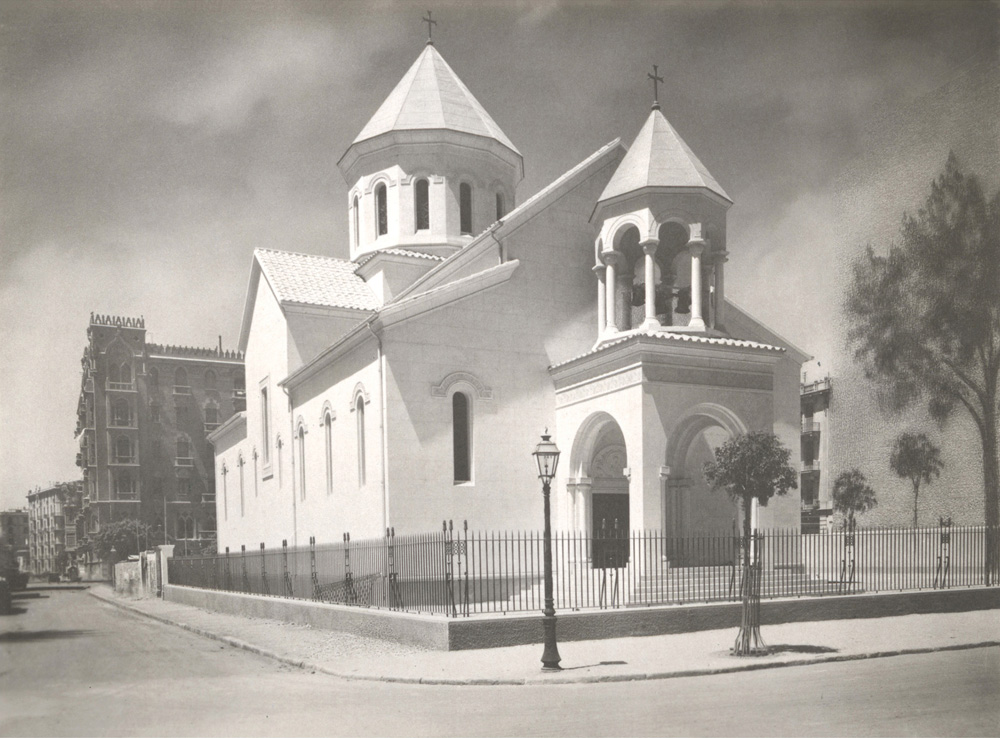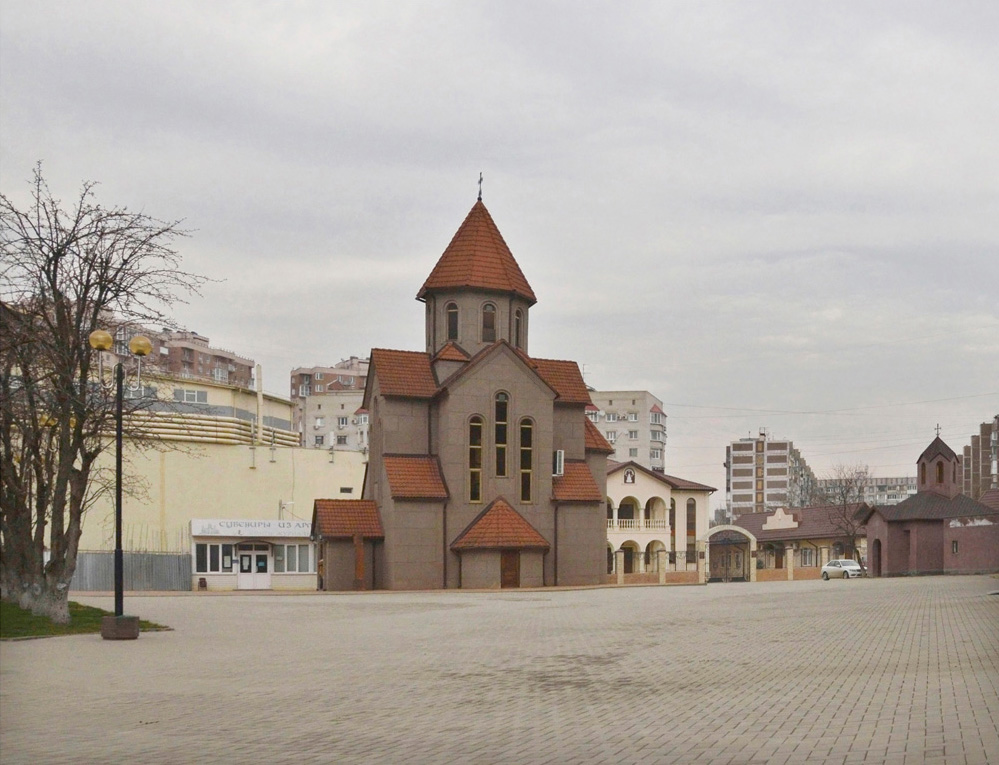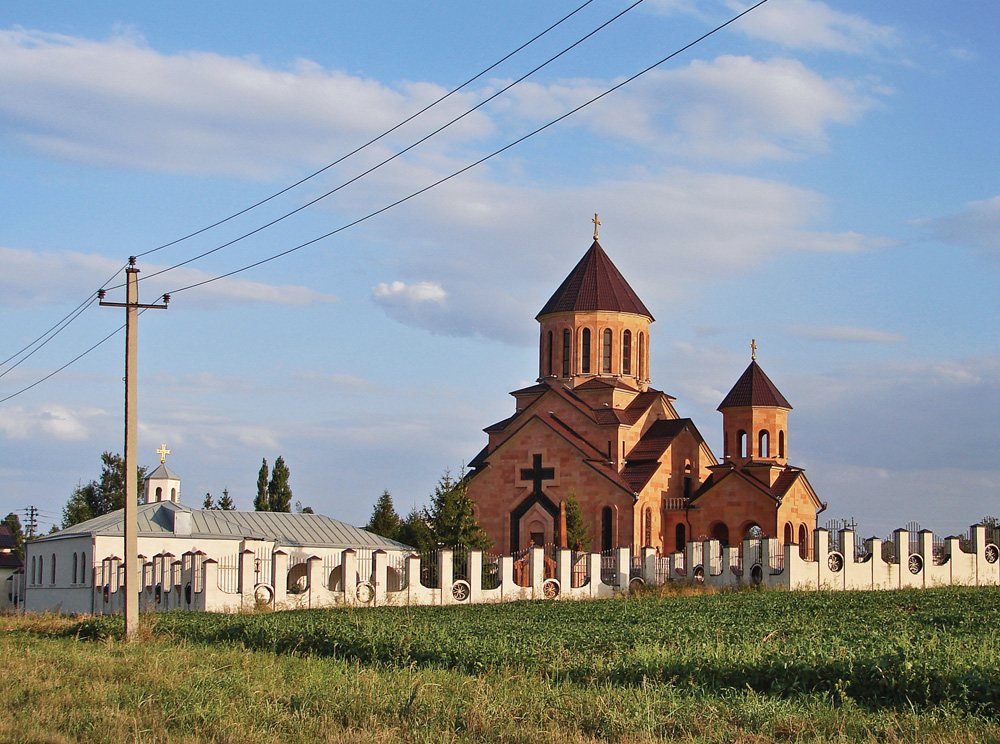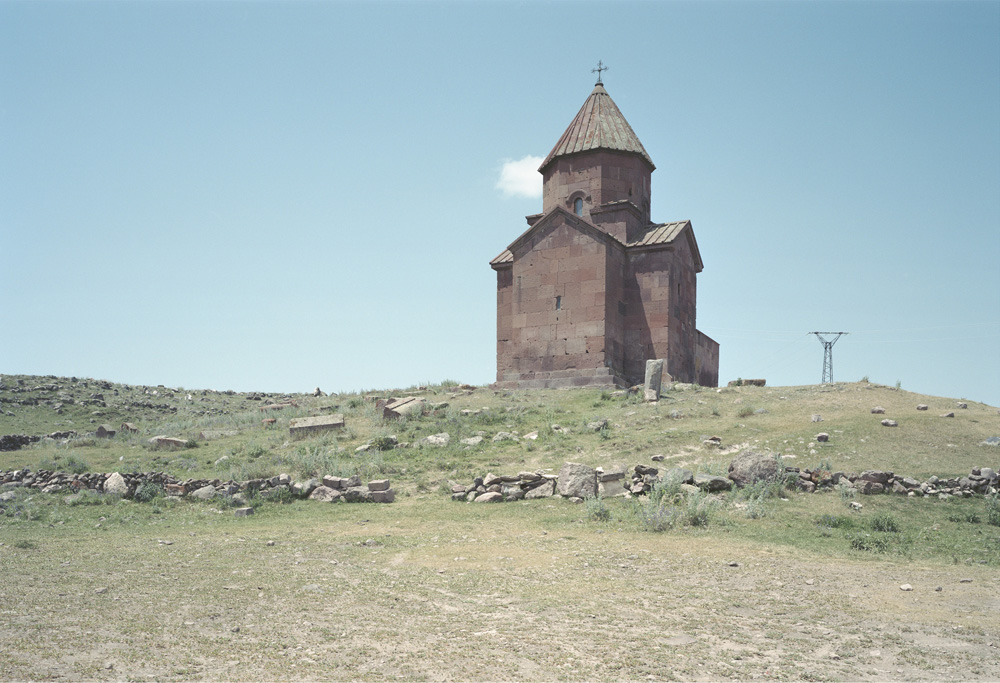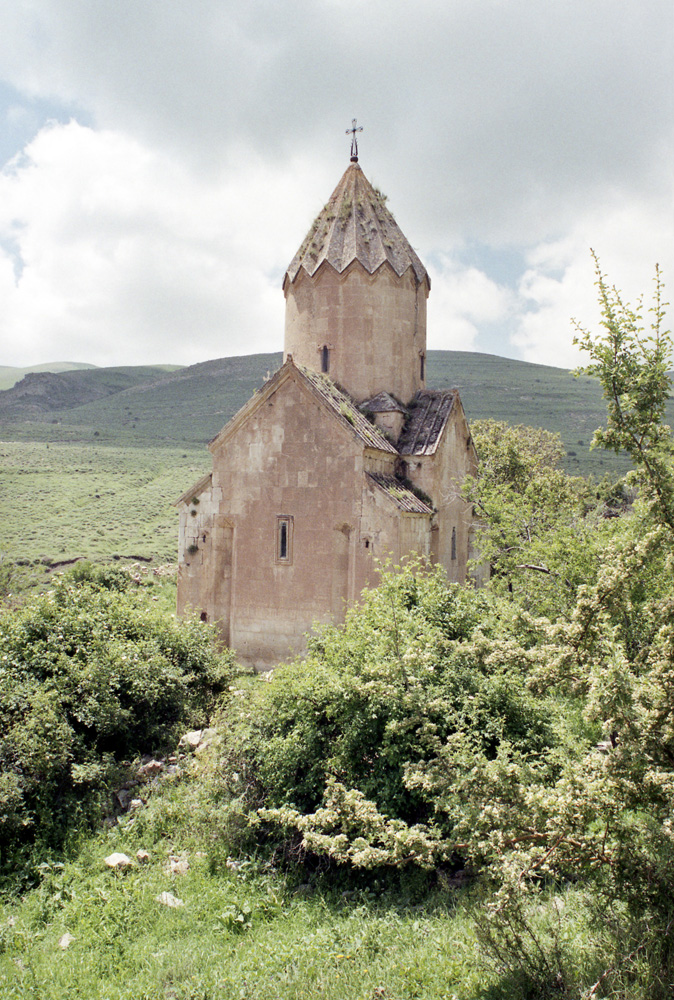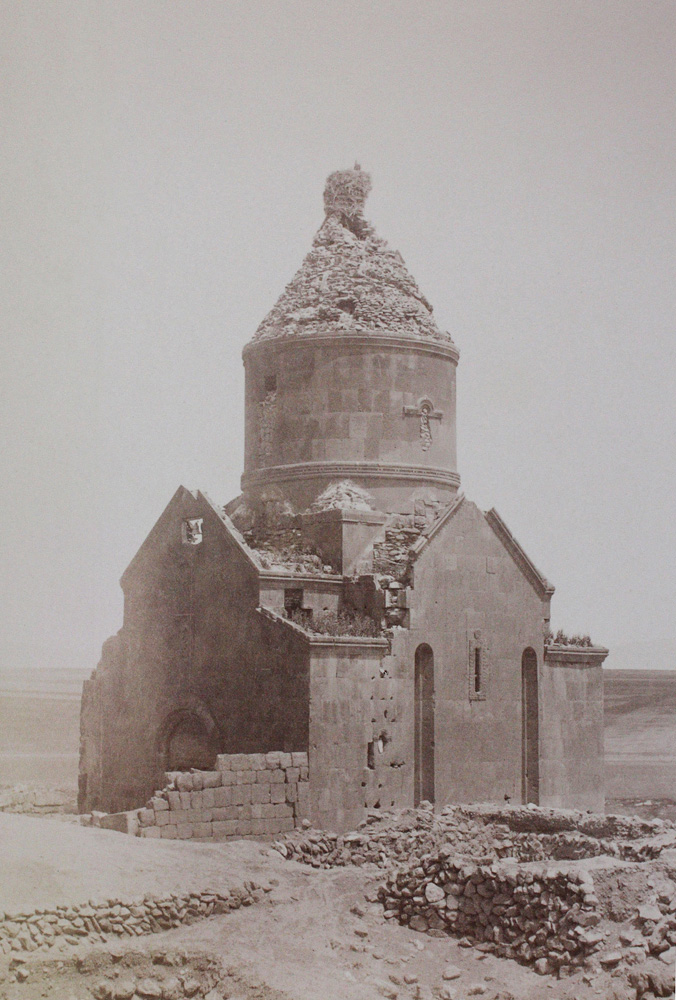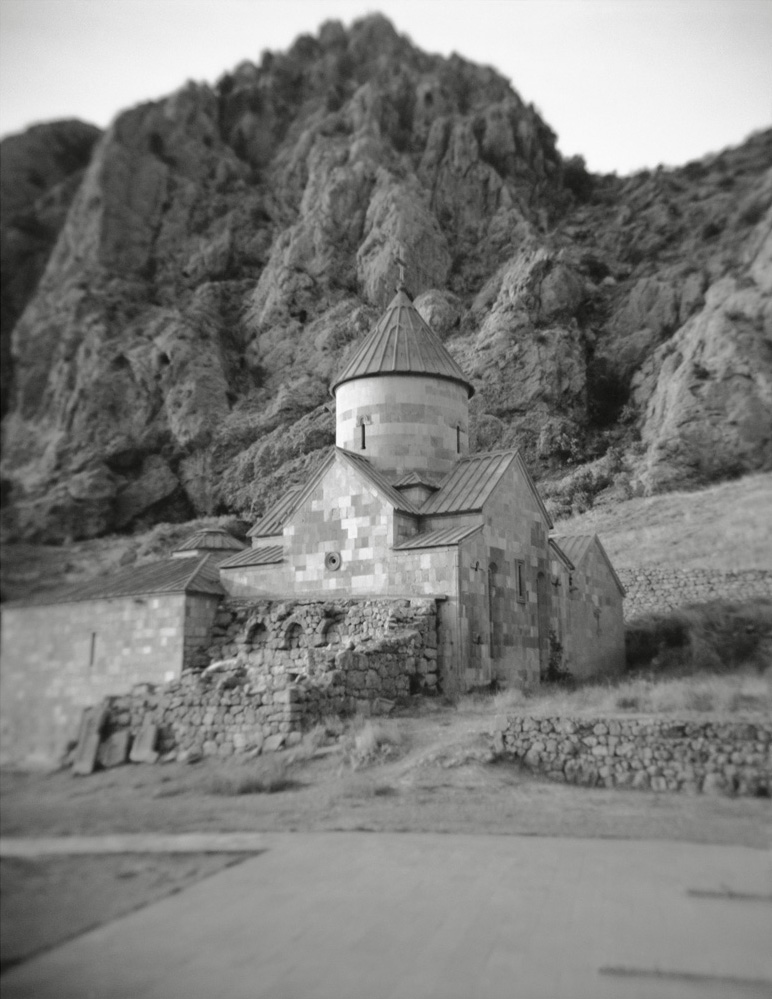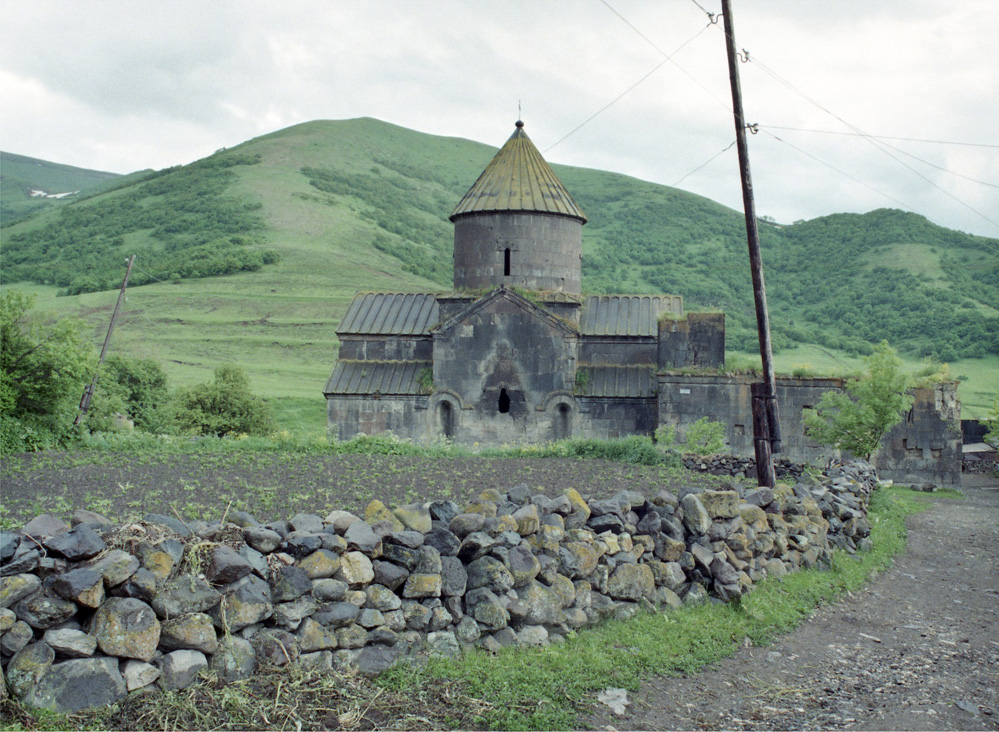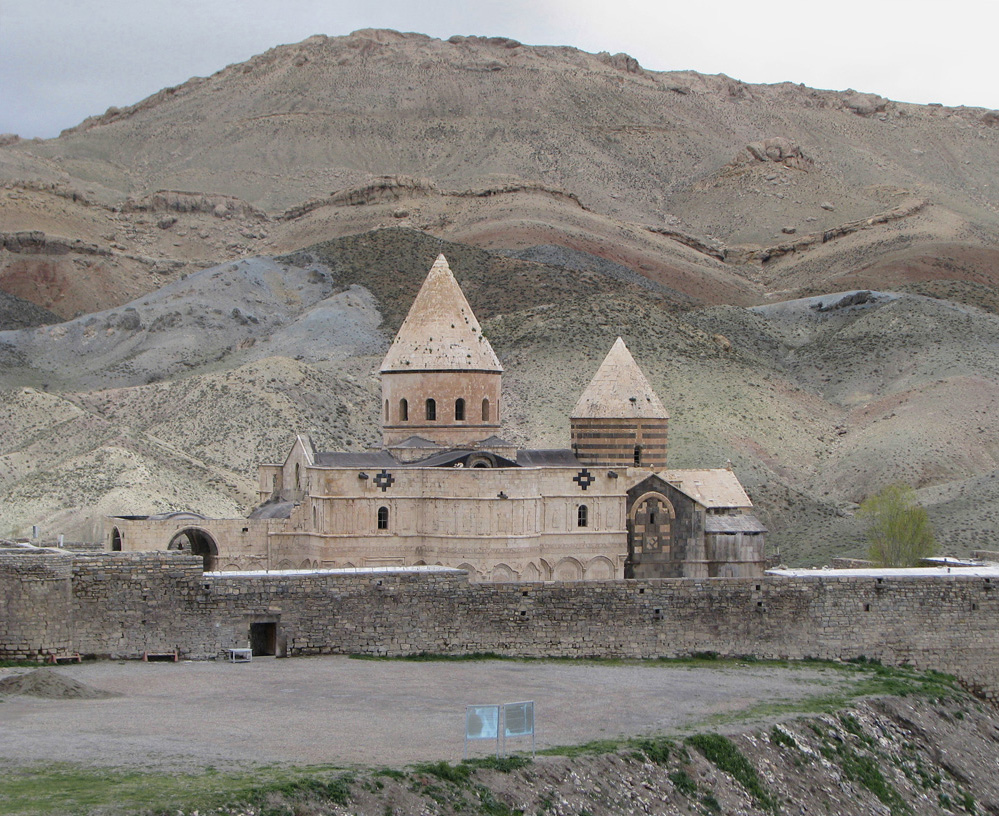Claudio Gobbi
Arménie Ville
A visual essay on Armenian architecture
„Inheritance“
It is tempting to call Gobbi’s Arménie Ville a typology, but the systematic and organized qualities inherent in such a research definitely do not dominate in his approach. This is reflected in the way he has presented his work until now. The churches are featured as quiet objects on small, carefully framed prints. For museum exhibitions his work is hung on the wall in a fan pattern as if he wants to avoid any association with a grid, with the serial aspect and aims at reflecting the geographical dispersion of the Armenian heritance.
Arménie Ville is undoubtedly based on a conceptual approach. Gobbi is clearly not trying to accentuate his own signature. Some of the pictures are his own creation; others were found on the internet or made by a third party on his request. You could say the project is more closely related to Ed Ruscha’s Twentysix Gasoline Stations than to the analytical, monumental architectural photography and city landscapes of his teacher Gabriele Basilico.
Nevertheless, it would be overly simplistic to describe Gobbi’s photos of Armenian churches as an inventory of vernacular architecture.
However the question is: how can the project be interpreted in a photographic manner? Gobbi is playing a complex game with notions as a document, mediatized reality, reproduction and format as well as with connotations such as memory, marks, authenticity and distance versus proximity. Gobbi´s strategy is extremely serious and recalls the exploratory spirit of a former generation of Italian photographers, such as Ugo Mulas and Luigi Ghirri. However, the crucial difference between their approach and his work is that Gobbi has to come to terms with a world in which the status of the photographic image and (digital) technology has become more and more problematic and complex.
Whereas at first sight Arménie Ville is a moving homage to the cultural inheritance of a small and tough people, Gobbi at the same time profoundly questions his medium through his approach and presentation.
Hripsimé Visser
(Extract)
—
„Claudio Gobbi. Atlas“
The faithfulness of the Armenian people to this ecclesiastic model is indeed singular and literally “hewn in stone”. No Renaissance, Middle Ages or Baroque has ever contaminated the purity of these architectural canons, which today are neither obsolete or antiquated, nor have the architects in this land of “screaming stones” ever digressed from these traditions, applying them with exemplary constancy.¹
No matter how small, wherever Armenian settlements are found, sooner or later a church will be constructed which conserves these characteristics, thus reaffirming the very identity of Armenian ecclesiastical ritual and tradition. ²
It is this unfailing constancy that struck Claudio Gobbi when exploring the concept of “frontier”. Indeed, this concept goes beyond its more usual geographical or political acceptation; here it is interpreted in its more cultural dimension, giving it a completely different significance from the violent, irrational events of history.
The almost obstinate and recurrent form of the Armenian Church is one of the absolute bulwarks of this frontier, which, from a certain perspective, coincides with Europe’s frontier, or with that of the Occident.
Martina Corgnati
(Extract)
¹ “The land of the screaming stones” is Armenia, thus defined for the prevalently rocky scenery of its highlands, which provided the setting for the violent genocide of the Young Turks.
² In 554 AD, the Armenian Apostolic Church separated definitively from Catholicism, not recognising the dualist propositions of the Council of Chalcedony, later ratified by the Council of Constantinople. The Armenian Church chose to follow the Miaphysite doctrine as pronounced by St. Cyril of Alexandria. Today, the Armenian Apostolic Church recognises the supreme authority of the Catholicos of Etchmiadzin, and is practiced by eight to nine million people throughout the world.
© all images by Claudio Gobbi / Publication by Hatje Cantz with the support of Fondazione Fotografia Modena, Italy / © all texts by the authors, reproduced by kind permission of Hatje Cantz and the authors
Arménie Ville
A visual essay on Armenian architecture
„Eredità“
Sarebbe seducente definire il progetto di Gobbi una tipologia, ma nel suo approccio a predominare non sono sicuramente le qualità analitiche, sistematiche e ordinatrici, questo risulta già dal modo in cui finora ha presentato il suo lavoro. Le chiese figurano come oggetti silenziosi su piccole stampe accuratamente incorniciate. Nelle sue mostre sono presentate secondo un disegno vagamente a raggiera, come se volesse evitare qualsiasi associazione con una griglia e con la serialità e quindi intendesse rispecchiare la diffusione geografica del patrimonio culturale armeno. Sicuramente Arménie Ville affonda le sue radici in un approccio concettuale. È evidente che a Gobbi non interessa sottolineare la propria calligrafia. Le fotografie sono sia di sua mano che trovate su internet o scattate da terzi dietro sua richiesta. Si potrebbe dire che il suo progetto è più direttamente affine a 26 Gasoline Stations di Ed Ruscha che alla fotografia architettonica, analitica e monumentale e ai paesaggi urbani del suo maestro Gabriele Basilico. Tuttavia sarebbe troppo semplice descrivere le fotografie delle chiese armene di Gobbi come un inventario di architettura vernacolare.
Ma cosa vuole essere quindi questo progetto in senso fotografico? Gobbi gioca in modo complesso con i concetti di documento, realtà mediatizzata, riproduzione e formato, ma anche con le connotazioni di ricordo, segno, autenticità e distanza contro vicinanza. La sua strategia è estremamente seria e richiama alla memoria lo spirito indagatore di una generazione precedente di fotografi italiani, come Ugo Mulas e Luigi Ghirri, ma in modo più marcato rispetto a loro Gobbi deve rapportarsi a un mondo in cui lo status dell’immagine fotografica e la tecnica (digitale) si sono fatti sempre più problematici e complessi.
Se a prima vista Arménie Ville è un omaggio commovente all’eredità culturale di un piccolo popolo tenace, con il suo approccio e con la sua presentazione Gobbi rivolge al proprio mezzo espressivo domande di fondamentale importanza.
Hripsimé Visser
(Estratto)
–
„Claudio Gobbi. Atlante“
La fedeltà armena al proprio modello di chiesa è granitica e… unica. Nessun rinascimento, medioevo o barocco ha inquinato la purezza di questi riferimenti che non sono mai diventati obsoleti e antiquati, o distratto gli autori di questi segni tracciati con esemplare costanza sulla terra “delle pietre urlanti”.¹ Laddove si insedia una comunità armena, per quanto piccola, lì prima o poi sorgerà una chiesa e questa chiesa conserverà quelle forme che proteggono la peculiarità della liturgia armena² e, in ultima analisi, ne riaffermano l’identità.
È questa incrollabile costanza che ha colpito Claudio Gobbi nella sua esplorazione del concetto di “confine”. Un concetto che, certo, non si lascia ricomprendere nelle categorie geografiche e meno ancora in quelle politiche; il confine consiste infatti, piuttosto, in una dimensione culturale che ne garantisce un’inerzia completamente diversa rispetto alle violente, irrazionali bizzarrie della storia. La chiesa armena, nelle sue forme ostinatamente ricorrenti, è uno dei baluardi in assoluto più stabili di questo confine che, in un certo senso, coincide con quello della stessa Europa o forse piuttosto dell’occidente.
Martina Corgnati
(Estratto)
¹ La terra delle pietre urlanti è l’Armenia stessa, così definita per la natura prevalentemente rocciosa del suolo delle Highlands che è stato teatro della violenza genocidaria dei Giovani Turchi.
² La chiesa apostolica armena si è separata definitivamente dal cattolicesimo nel 554, non riconoscendo le proposizioni duofisite proclamate dal concilio di Calcedonia nel 451 e avvalorate poi dal concilio di Costantinopoli. Sul piano dottrinale, essa segue il miafisismo di Cirillo d’Alessandria. Attualmente, il cristianesimo apostolico armeno che riconosce l’autorità suprema del Katholikos di Echmiadzin, è praticato da circa otto-nove milioni di persone sparse in tutto il mondo.
© all images by Claudio Gobbi / Publication by Hatje Cantz with the support of Fondazione Fotografia Modena, Italy / © all texts by the authors, reproduced by kind permission of Hatje Cantz and the authors

